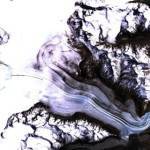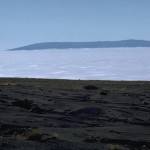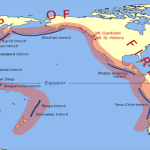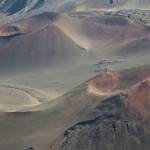Magma
Magma is a molten and liquid rock that is only found below the earth’s surface. That is because once it reaches the surface it becomes lava. This substance is made up of a combination of dissolved gases, rock fragments and crystals and the liquid part of it is referred to as the melt. Because of its creation due to high pressure and temperatures, this is an extremely hot substance, ranging from 1,292 to 2,372 degrees Fahrenheit. Frequently you will find this substance pooling in magma chambers which can feed volcanoes. It can also intrude into nearby rocks, rise to the surface in the form of lava or become an explosive ejection of tephra.
How It Forms
Magma forms in either the lower portion of Earth’s crust or the upper part of its mantle. It is produced when high amounts of pressure combine with high temperatures, causing some of the rocks in the area to melt, creating this substance. Without this combination of pressure and heat, this substance would not be able to form.
Magma Chambers
This substance is most frequently found in magma chambers under the surface of the earth. These are basically underground pools of this liquid rock. In order to maintain its form, the liquid in these chambers must be exposed to constant high temperatures in addition to a great deal of pressure. Because of this, the high pressure can eventually create a fracture in the surrounding rock, allowing the liquid to escape to the surface at which point it becomes lava.
Basalt
Magma comes in three major types, all of which have different properties and are more common with different types of volcanoes and eruptions. The first type of this liquid is basalt and it is very low in silica and has a very low gas content as well. In addition, this liquid has a low viscosity, meaning that it appears thicker. This type of liquid rock is formed at a much higher temperature than the other two varieties, at around 1,200 degrees Celsius. It is more common in volcanic fields than other types of volcanoes and is usually present in flowing eruptions that produce thin lava flows that form shields.
Andesite
Andesite magma occurs at a slightly lower temperature than basalt, ranging from 800 to 1,000 degrees Celsius. It also has a slightly higher content of silica and gas and is moderately viscous compared to the low viscosity of basalt liquid rock. Andesite is most common in stratovolcanoes and will usually produce moderately explosive eruptions that include a liquid flow as well. These eruptions will generally create thick lava flows that are full of rubble.
Rhyolite
The third type of magma is rhyolite and it occurs at the lowest temperature possible for this substance, ranging from 750 to 850 degrees Celsius. It is the complete opposite of the basalt version as it is rich in silica and has high gas content. In addition, it has a high viscosity. This type of liquid is most commonly related to caldera volcanoes that are distinguished by very explosive eruptions. These eruptions will usually produce pumice, ash fall and pyroclastic flows. In cases in which this substance has lower gas content than normal, the lava will begin to flow.
Magma Eruptions
Volcanic eruptions frequently occur because of the accumulation of magma within which then erupts. Usually these eruptions occur because of high pressure stemming from the dissolved gases within the liquid rock. The gases usually remain dissolved because the pressure of the rocks confining the substance is larger than that of the gas’s vapor pressure. If this balance shifts, however, the result is many tiny gas bubbles filling the substance and trying to escape. Once the pressure becomes too great, the eruption occurs.




